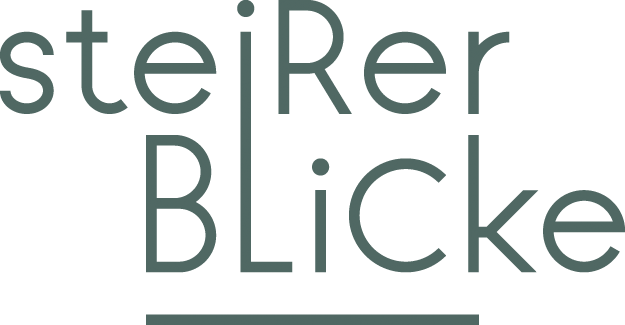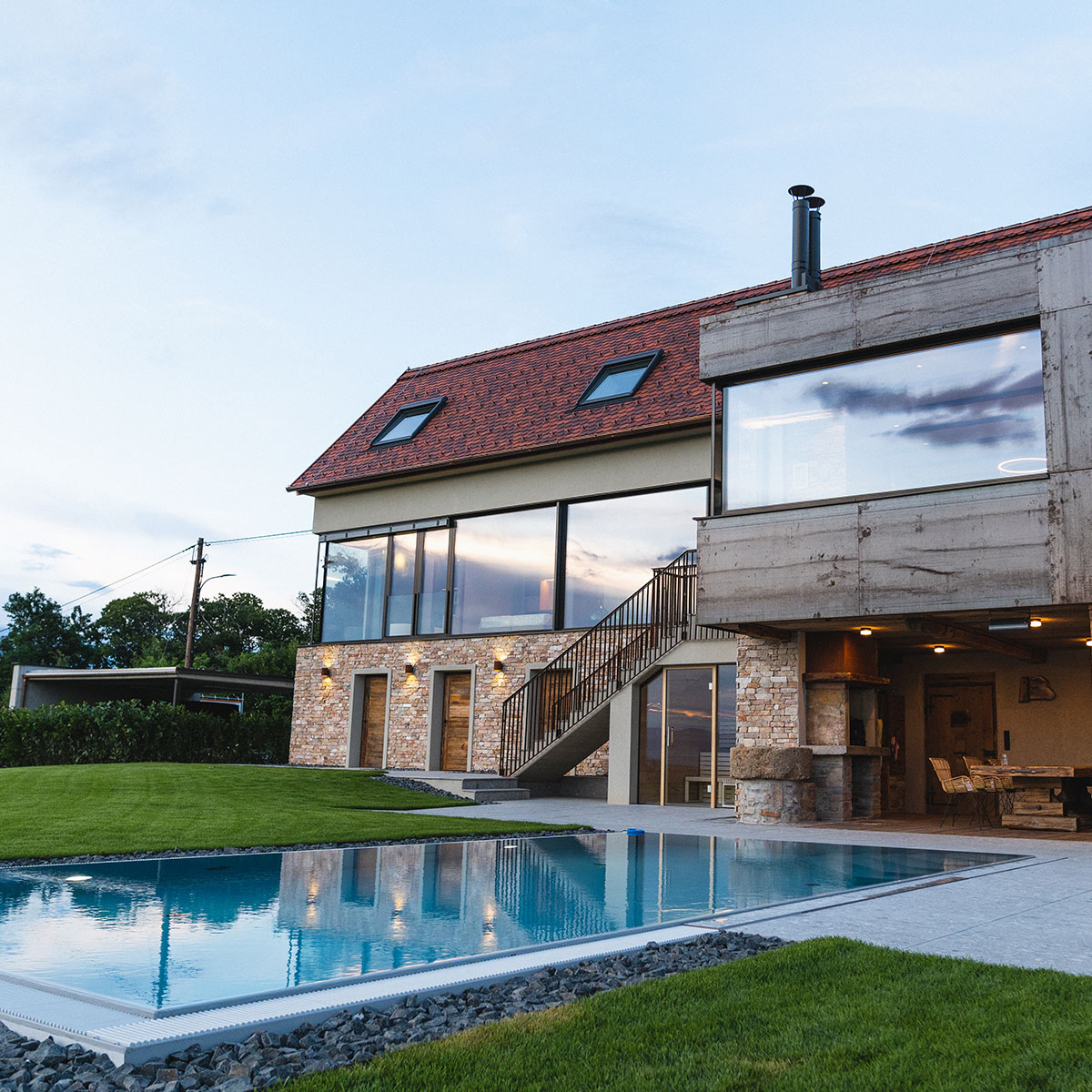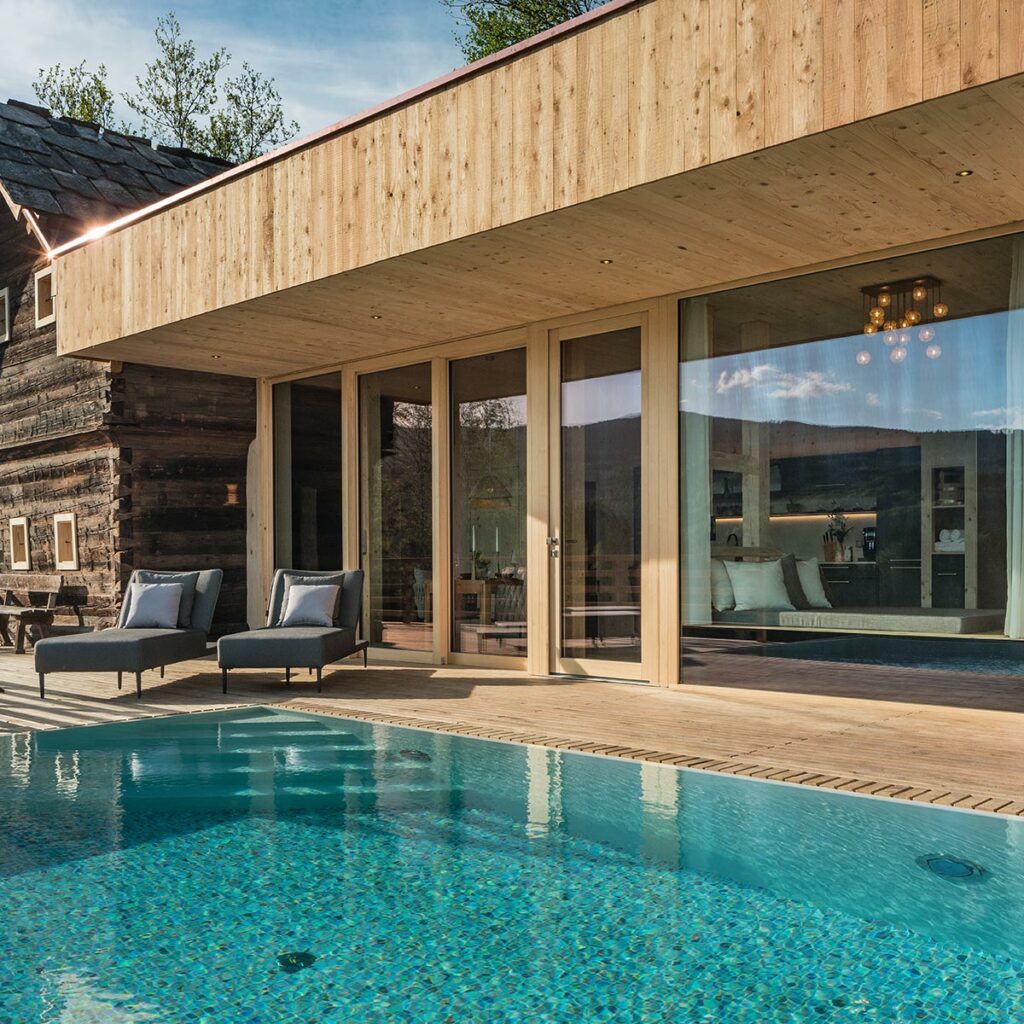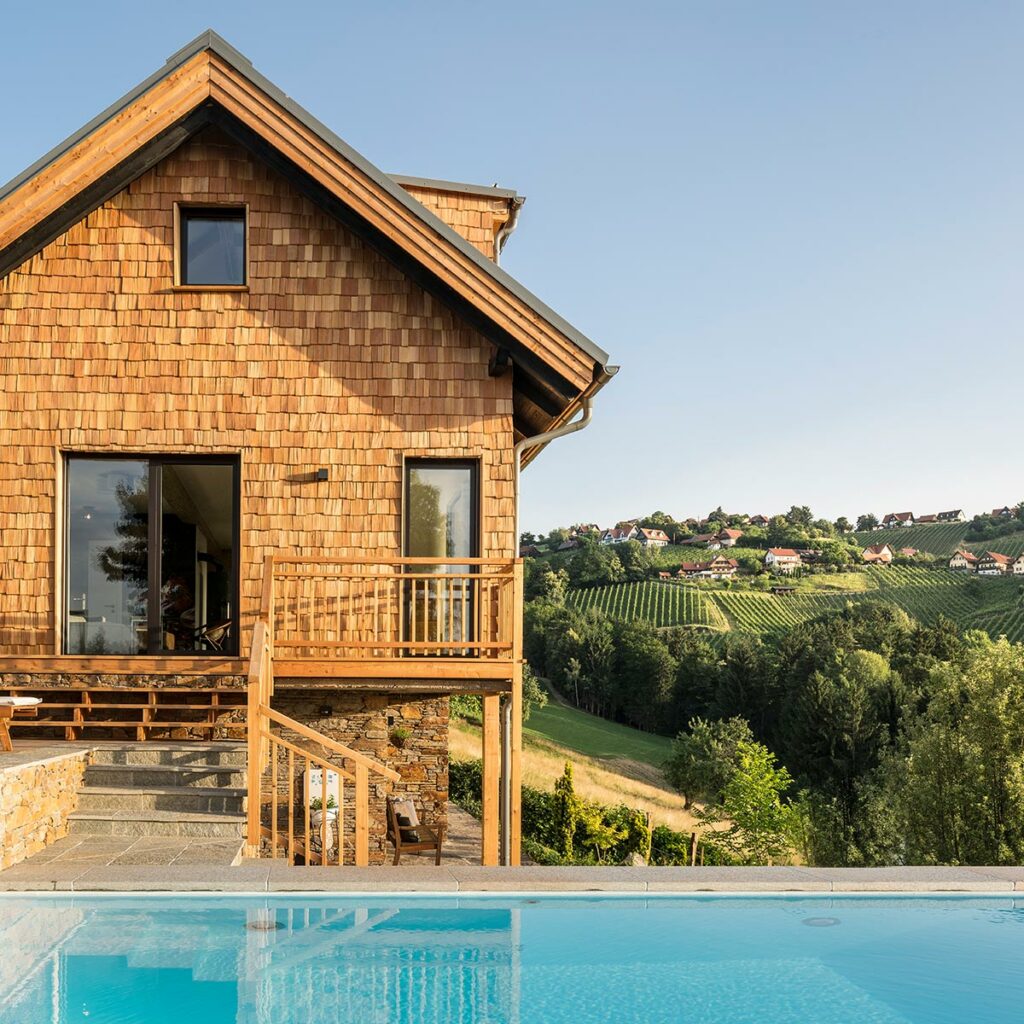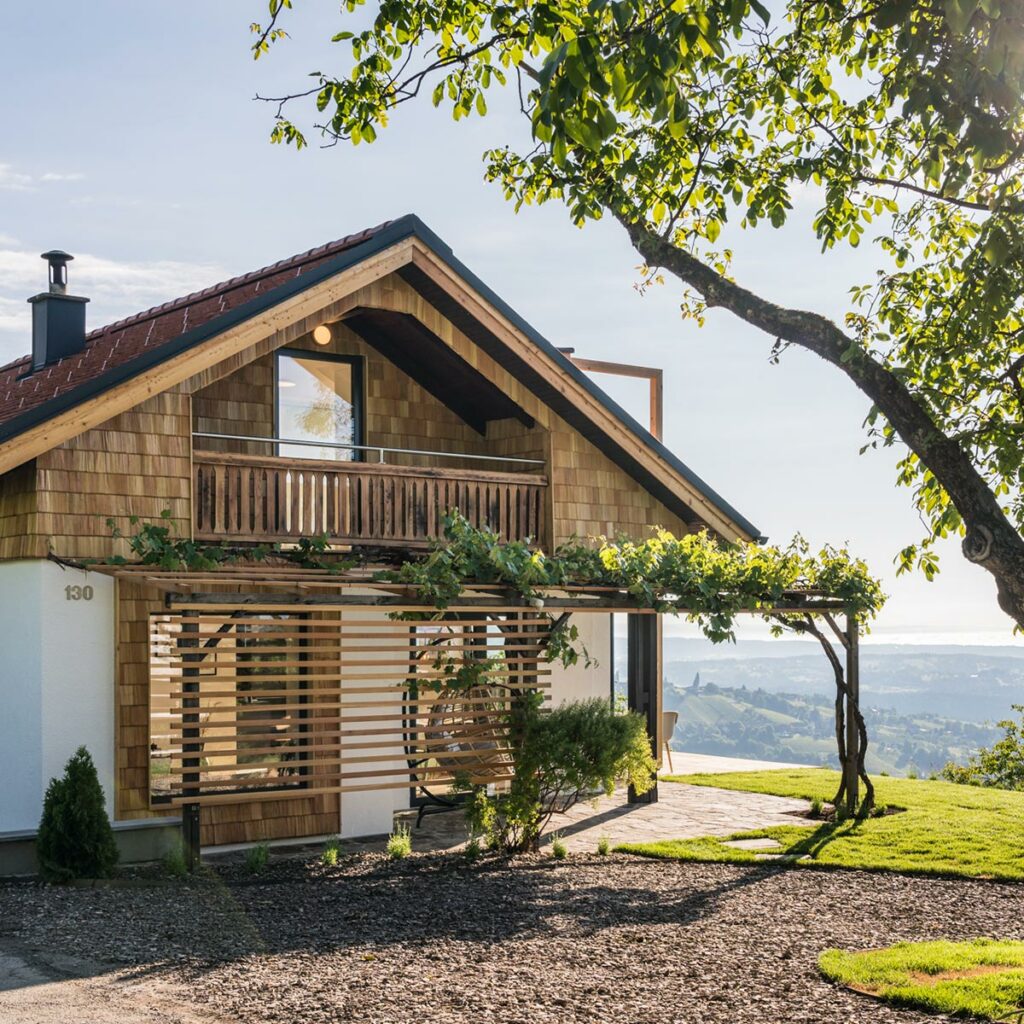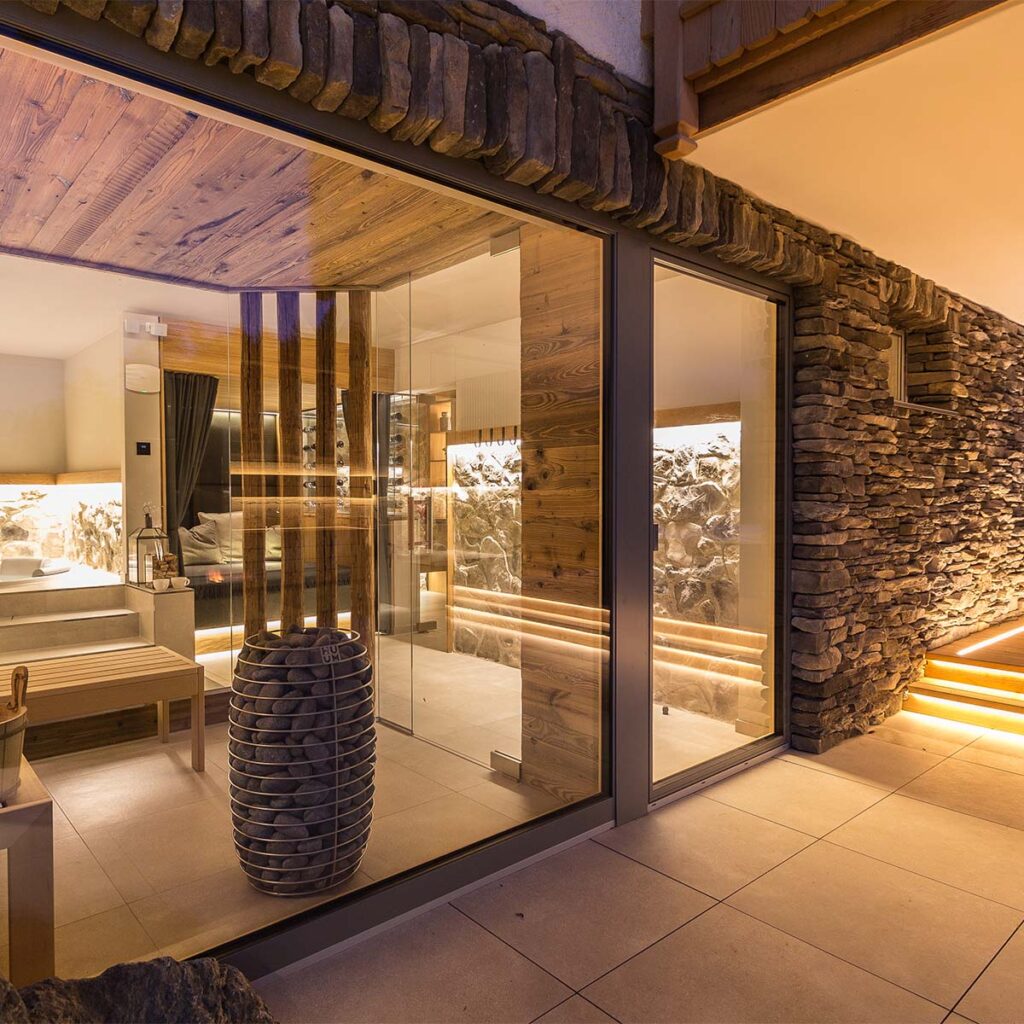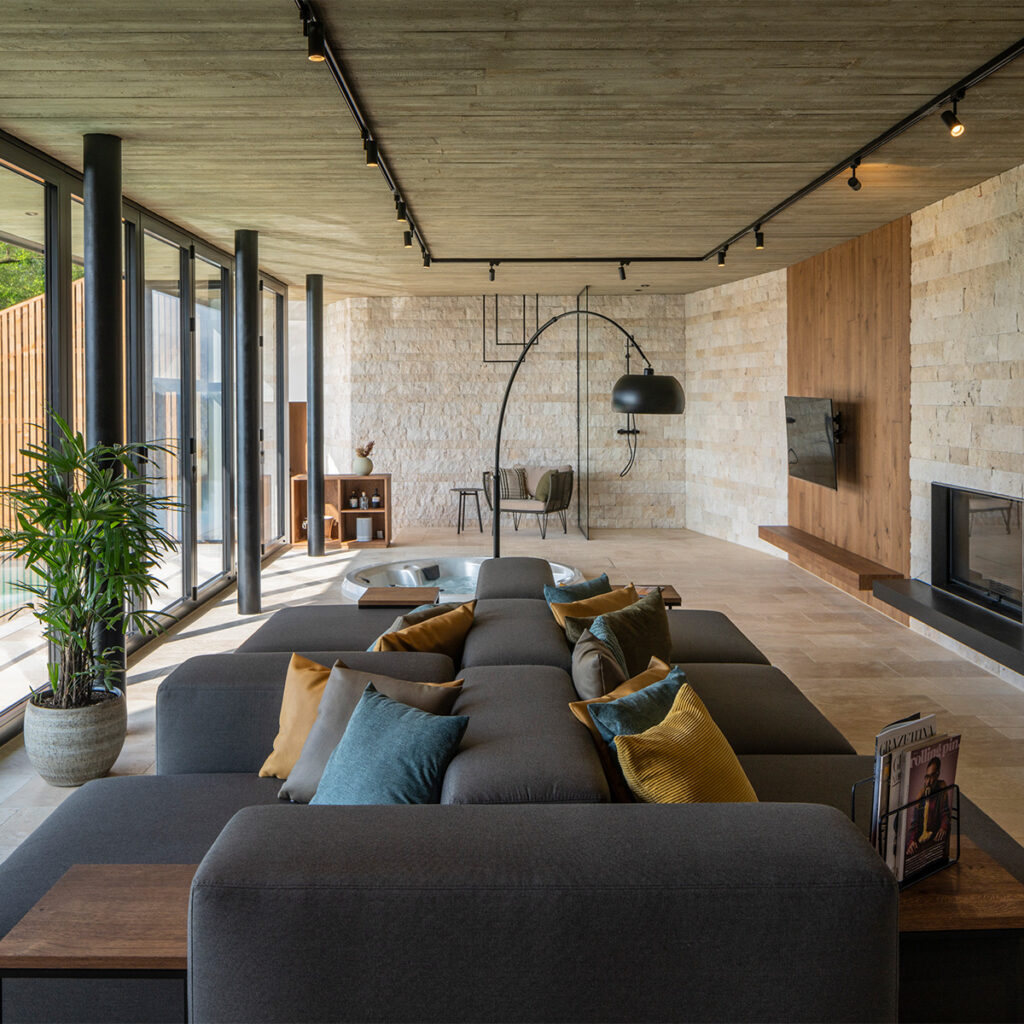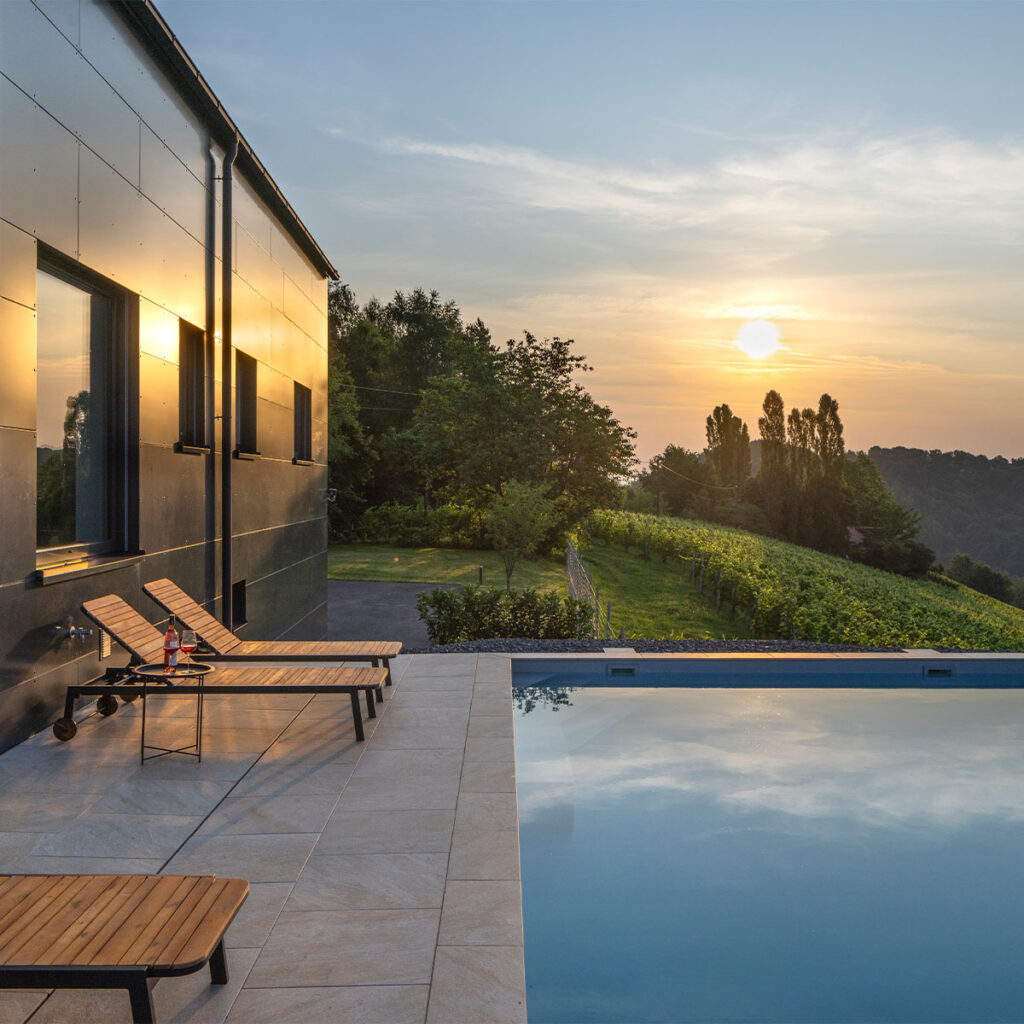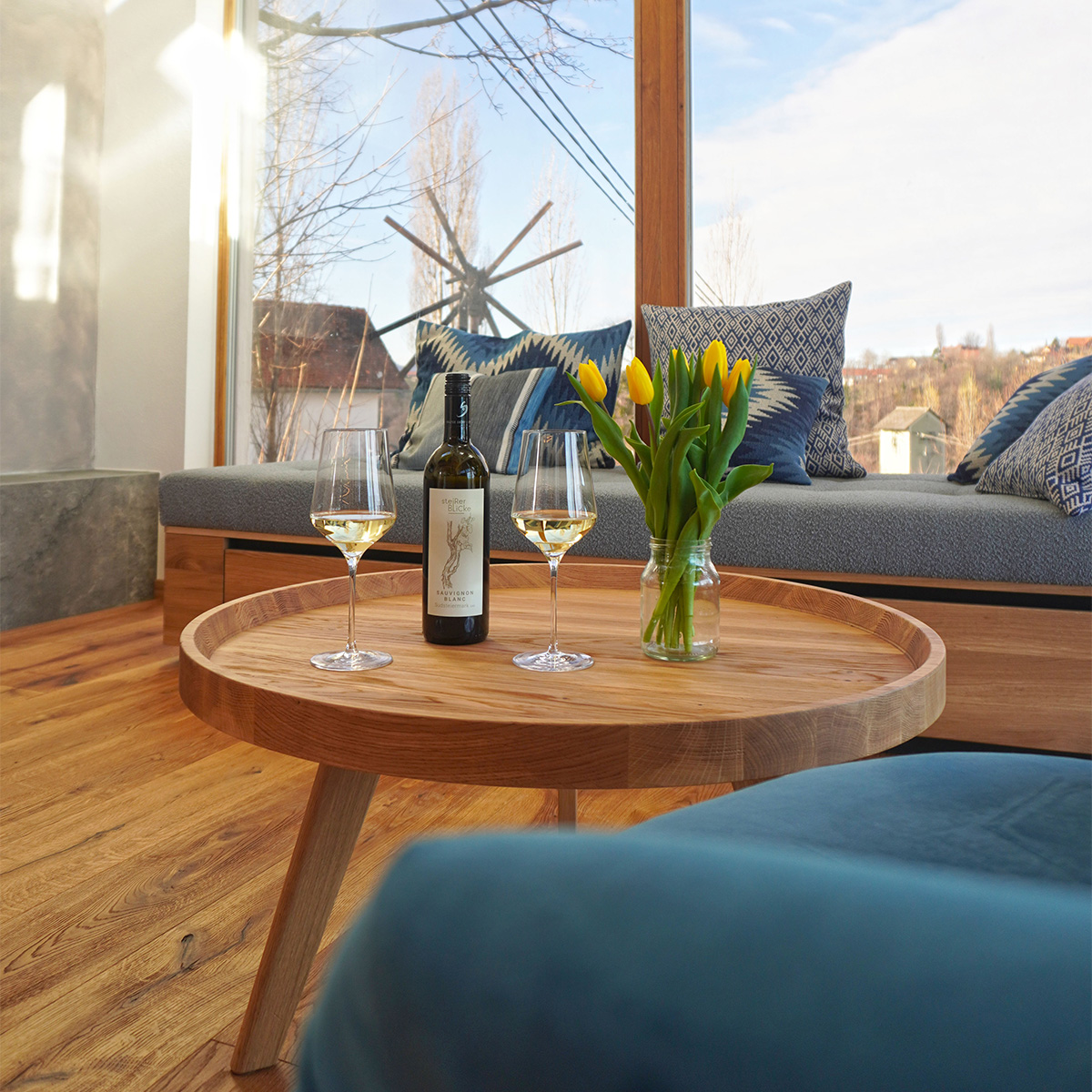A glance at Stainz
Experience Stainz and be enchanted by this fascinating region.

Here at Erzherzog-Johann-Markt, at the foot of the former Augustinian monastery, visitors can experience a unique blend of art, culture, wine and culinary delights. Stainz is the ideal starting point for extensive cycling and hiking tours in picturesque surroundings.
Stainz offers a landscape ranging from fertile plains with corn, wheat and pumpkin fields to characteristically steep Schilcher vineyards. Gurgling streams and refreshing springs lead up to the green forests of Reinisch- and Rosenkogel at the foothills of the Koralm massif. The diversity of this landscape is also reflected in the people and the irresistible delicacies from the kitchen and cellar.
The lifestyle here is unique, as is the nature on offer. Discover leisurely circular hiking trails, along which wine taverns invite you to stop for a bite to eat, or follow the cycle paths with illustrious names such as Schilchertour or Weinland Steiermark Route. The south of Styria presents itself as a true experience.
Excursion destinations around Stainz
Southwest Styria not only offers culinary experiences, but also a wealth of culture, history and customs. From Roman archaeological sites and ancient wine cellars to the nostalgic Stainzer Flascherlzug, there are numerous excursion destinations and sights to discover.
Visitors experience the region around Stainz with its thousand-year-old cultural heritage and fascinating appearance. Particularly worth mentioning are the wine routes that lead through breathtaking landscapes, lined with a multitude of wine taverns.
Visitors can also admire castles, palaces, museums, galleries and exhibitions to learn more about the Romans, Celts and history of the region. In numerous manufactories, you can look over the shoulders of producers and discover how Styrian delicacies from seed oil to lavender syrup are made.
Stainz Castle, located in the heart of Styria, sits majestically on the southern foothills of the Rosenkogel above the market town of Stainz. This historic building, surrounded by its own vineyards and orchards, was built in 1229 by Luitbold von Wildon as an Augustinian canon monastery. Its magnificent architecture has roots in the Renaissance and Baroque periods, which is particularly evident in the church of St. Catherine with its opulent structures.
In 1784, the canons’ monastery was secularized by Emperor Josef II and acquired by Archduke Johann in 1840 for 250,000 guilders from the state estate. Since then, Stainz Castle has been in the possession of Archduke Johann’s descendants, the Counts of Meran, for whom it is not only their residence but also their place of business. Franz Meran continues the legacy of his famous ancestors with great commitment and contemporary business principles.
At Stainz Castle, the careful and responsible treatment of nature is in harmony with state-of-the-art technology and economic interests. This magnificent castle is a living testimony to history and an important cultural heritage of the region. Visitors can experience the fascinating history and unique atmosphere of this historic place.
Universalmuseum Joanneum – Hunting Museum Stainz
Hunting has accompanied human life for thousands of years. Since September 2006, the Hunting Museum in Stainz Castle has been presenting hunting culture in all its facets and exploring the interplay between man and nature. Visitors can learn all about this fascinating subject in a unique and innovative exhibition.
The Hunting Museum Schloss Stainz views hunting as a historical, sociological and philosophical-ethical phenomenon and thus appeals to a wide audience with an interdisciplinary, cross-cultural approach. Here, visitors encounter the “romantic hunter” and the “wild rebel”, explore historical weapons, discover Thomas Bernhard’s “Hunting Society” and learn more about traditional remedies from folk medicine.
On the second floor, the tour continues as an exciting hunt, where visitors can search for animal tracks and listen to animal calls. Current wildlife ecology issues and the role of modern hunting are also explained.
The innovative presentation of the hunting museum blends harmoniously into the historical ambience of Stainz Castle and refers to the long hunting tradition in Styria, in particular to Archduke Johann, the founder of the Joanneum, who was known as a passionate hunter. The heirs of Stainz Castle are continuing the legacy of this important place in a contemporary way.
The Stainz Castle Hunting Museum, built in 1695 and acquired by Archduke Johann in 1840, offers a generous exhibition area of 1,200m² for the hunting museum over several construction phases. New depots were built, the cash desk and store area redesigned and the administration area revitalized. The content concept was developed by Dieter Bogner of bogner.cc. The new layout of the hunting collection in Stainz Castle was designed by architect Georg Driendl from Vienna.
Experience a nostalgic train ride through the Schilcher-pumpkinseed-oil-Land with the legendary Stainzer Flascherlzug (Steinzer bottle train), which runs from Stainz to Preding and back.
During the season, there is a varied children’s program on Sundays at 15:00 with every scheduled train! For younger guests, the park on the station grounds offers a wonderful and large playground.
An accordion player entertains the guests during the ride. You can make culinary stops at the intermediate stops in Kraubath and Preding (not included in the price). The ride takes around 2 to 2 ½ hours. Dogs are allowed on a lead and with bite protection.
The iconic Flascherlzug was opened in 1892 and has been a true West Styrian institution ever since. The memorable name of the train dates back to the turn of the century and has an entertaining background story. The miracle healer “Höllerhansl” practiced in Rachling. He was supposedly able to detect illnesses from urine. Back then, many people traveled to “Höllerhansl” by train with a bottle of urine in their luggage, hence the name “Flascherlzug”. Even today, many of the 25,000 annual passengers are said to have a bottle in their luggage, because you rarely leave Schilcherland without the rosé wine that gives it its name!
From April to the end of October and on special days such as St. Nicholas Day or New Year’s Eve, the Stainzer Flascherzg runs on the 11.9 km route from Stainz to Preding and back. The trips take place on Wednesdays, Thursdays, Saturdays, Sundays and on public holidays and start at Stainz station near the dairy. There is a stopover in Kraubath and the turning station is in Preding-Wieselsdorf. After around two hours, the train returns to Stainz station. During the journey, an accordion player provides the best entertainment and culinary delights are served in a specially equipped restaurant car.
You are currently viewing a placeholder content from TrustIndex. To access the actual content, click the button below. Please note that doing so will share data with third-party providers.
More InformationUnique retreats for
incomparable experiences:

